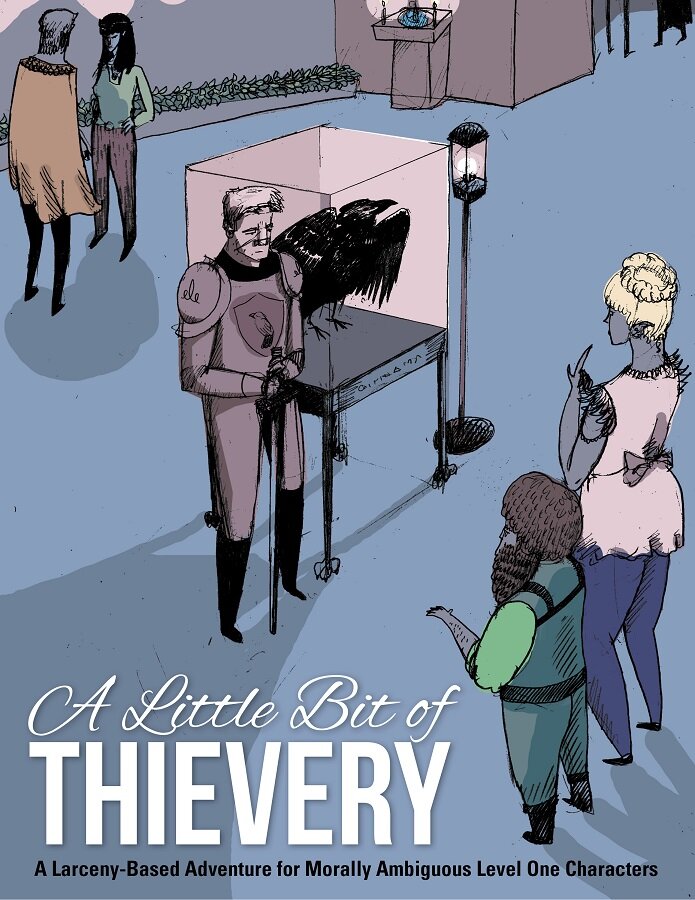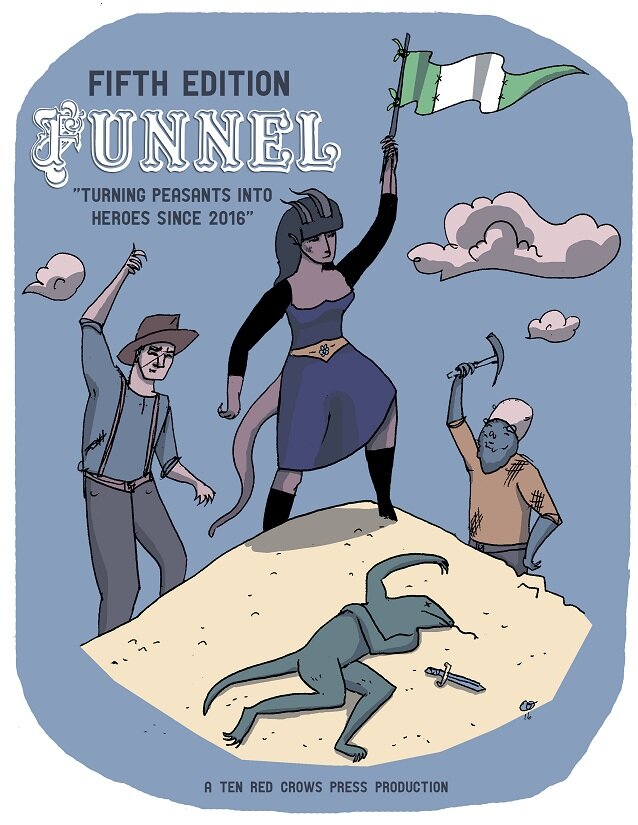Getting better at Improvisation
Improvisation is one of the most important skills that a GM can have. One of the best ways to develop that skill is to actually practice it. But then you are trapped in the great reoccurring doom cycle, of not trying it because you are not ready, and then not developing the skills because you never practice.
If you have GMed for over a year or so, you are probably ready to improvise: you might just lack the confidence to throw yourself face first off the predestined cliff into wild and raging torrent of improvisation. You might as well get good at it now; your players will eventually wise up and begin making choices about things you didn't anticipate.
The first game I GMed that built my confidence for improvisation, was Everyone Is John.
A game for horrible people
The premise of the game is simple. John is an insane man in Minneapolis and has several voices (i.e. the player characters) in his head that are vying for control. The voices in John’s head are attempting to complete obsessions from “eating a bug” to “crashing a city bus”. The multitude of obsessions and quick passage of control of John from voice to voice creates an insane erratic behavior. Your players will, of course, use this opportunity to do what they have always wanted to do. They will reveal that they are more horrible AND awesome than you can possibly imagine.
Little_Red_Fox on Everyone is John:
First off, let me say that, no matter how many podcasts or hours you have spent preparing, nothing and I mean nothing, can prepare you for the rocket powered monkey navigated sled that is, Everyone is John.
The prep-less game
Your payers keep their skills obsessions from you, so you cannot prep for it. Put John in a well developed suburb of Minneapolis? Your player will hijack a car and drive away from your carefully planned neighborhood. Spend time making an NPC? Your player will stab her and loot the $12 dollars off the body to purchase a series of aerosol cans and baby bottles for some nefarious, unknown purpose.
Everything, from the contents of a refrigerator to the wallet of a wino John just beat up will be made up on the fly. There is no random table for wino wallets and your players are going to expect you to know exactly how many worn out dollar bills the man had.
This is scary:
I remember a couple of butterflies before GMing my first game of Everyone is John. There is no safety net, no notes. Lots of information is hidden from you. It will be Ok. Most of the players will merely accept your awkward descriptions as reality and not question. The most important thing is practice. The beautiful thing about Everyone is John is that it is a one off game. John usually dies at the end, and thus there is no mess to clean up. If you screw up, it will just be referred to “that game that no one talks about”. If my players are anything like yours, that will happen naturally anyway*.
How do I do it:
For what it’s worth, this is my process. In my head, I think about the object or scene in the context that already exists and the description becomes a natural extension of what you already know. The kitchen? Is it in an upscale house? Imagine it in your head, what do you see? I see it has granite countertops, a nice steel refrigerator, lots of windows, and a nice breakfast bar with two stools. If you have a feel for what a player wants, you might give it to them, you might not. Eventually you will get fast enough to narrate as if you had it written down before hand. Without Everyone is John, I would still be prepping way too long before each D&D session we play.
*“You want to stick what, where? (sigh) Fine. Whatever. Roll for it.”



